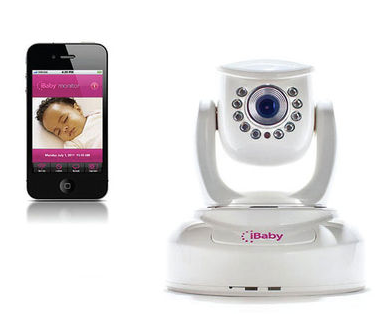
WiFi Baby Monitor Security Advice from Tech Experts
Erin Burt

I’ve seen these articles off and on ever since having internet-connected video cameras in homes became a thing. After reading “My baby monitor was hacked” or “My security camera started moving on its own,” in several headlines, I find it way too scary to own a camera like that. Now that I’ve got a sleep-fighting toddler, it’s becoming a more tempting possibility. So, I talked to my IT genius friend Pete about how to keep our video monitors safe. Pete tells me that the monitor itself is a smaller part of the problem. The biggest threat you need to be concerned about is protecting your Wi-Fi network. Here are a few tips to guard your video monitors, phones, tablets, and all of your other internet connected devices.
Simply google search your router’s model number and how to (whatever you’re trying to do from the below items). You should find an easy-to-follow tutorial with pictures and specific directions for your exact router within the first few items on the list.
Disable WPS
WPS (Wi-Fi Protected Setup) isn’t always used, but it’s been known to have some serious security vulnerabilities. Here are some general instructions on how to disable WPS. WPS is basically a button on your router that you can press to auto-sync with a device. It’s got an easy to hack 8-digit pin though, and it’s way to easy for people to get.
Change the password on your router
If you’ve got a router it was supplied with a default password. Change it. Make it something unique, and preferably long. My theory--just put a sticky note on the box with the router password, internet company account number, codes, or whatever you need to have when you inevitably need to contact them. I figure no hacker is actually going to break into my house and steal my info, but I’m going to be super annoyed if I can’t track the pertinent information down when I need it.
WPA2 authentication is the most important
While you’re in the password area of your router, see if there’s an option to set up WPA2 authentication. It’s significantly more secure than WEP, which only protects your network from the average user. This is a super important step in increasing your Wi-Fi security, and according to my expert Pete, 99% of routers have this option in the same area as the password area. If you don’t have the option for WPA2, WPA will work just fine, just make sure it’s not WEP. WEP is basically the same thing as having no password for your Wi-Fi at all.
Setup a guest WI-FI password
If your router will allow you to setup a separate guest password. Setup a separate, complex password for your personal devices, and a simple guest Wi-Fi password for visitors.
Hopefully these tips will help you sleep safer at night knowing that not only is your baby’s monitor more secure, but so are all of your devices.
Jenny Ditch lives in Illinois with her family and is so thankful that there is an IT genius in her village







